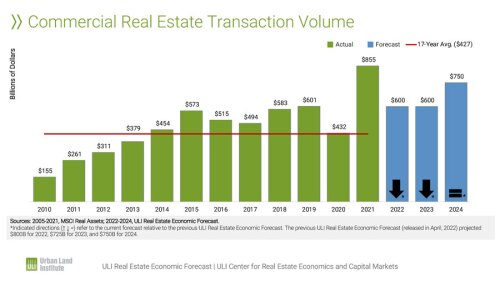This article is republished with permission from REITCafe.
Landlords are confident that apartments are not overbuilt, and rents continue to increase in many markets, but real estate investment trust (REIT) investors are less certain. This is not the first time that investors have become skittish. Concerns about new supply led the REIT sector to pull back in 2013, but the market maintained several additional years of strong growth, fueled by the growing economy, demographic trends that favored renting, and new supply that did not materialize as quickly as expected. This year, deliveries are reaching new peaks, and investor worries about a market softening are reflected in the sector’s –1.12 percent year-to-date total return.
According to REIS, U.S. apartment vacancies climbed slightly during the first quarter to 4.5 percent from 4.4 percent at year-end 2015 and 4.2 percent in first-quarter 2015. A surge in construction deliveries is the driving factor for the higher vacancy rate. Apartment rents continue to rise in many areas, but at a slower pace than normal.
| TREPP-i Survey Loan Spreads (50–59% LTV)* |
| This Week | Previous Week | Previous Month | End 2015 | End 2014 | |
| Industrial | 166 | 164 | 171 | 163 | 138.5 |
| Multifamily | 166 | 164 | 169 | 168 | 139.8 |
| Office | 179 | 174 | 178 | 168 | 148 |
| Retail | 165 | 164 | 171 | 168 | 139.8 |
| Average Spread | 169 | 166.5 | 172.25 | 166.75 | 141.5 |
| 10-year Treasury Yield** | 1.87 | 1.71 | 1.72 | 2.27 | 2.17 |
Rental concessions also are increasing, especially for new projects that are leasing up. The New York City market has already been hit with concessions. In its first-quarter earnings call, Equity Residential noted that it is increasing rental concessions in Manhattan as competition heats up for tenants that can choose from an abundance of new product. Other markets with significant new supply like the San Francisco Bay area have maintained their growth so far, but could be next to face concessions, especially since slower anticipated growth in the tech sector could affect demand and rents that people can pay.
Overbuilding is a significant worry, especially at the top of the market. Multifamily permits activity has surged in recent years, topping its 2005 peak last year. During the first four months of 2016, the number of permits issued was down, but it was down a modest 12.4 percent from year-ago levels.
Millennials and baby boomers have driven recent apartment demand, and availability of capital plays an important role in their tenure choice. Young people are delaying marriage, children, and homeownership and renting apartments for longer. On the flip side, many millennials want to be homeowners, but they also want to live in (more expensive) urban locations. Qualifying for a mortgage is difficult because these young adults are not well established financially. Many also contend with student debt. But if access to mortgage capital increases, they could migrate from the renter’s market toward for-sale housing.
Stricter borrowing requirements could help control future supply. The U.S. Office of the Comptroller of the Currency (OCC) urged national lenders to tighten loan requirements for multifamily developers this week. Commercial mortgage–backed securities (CMBS) lenders also are pulling back. During the first four months of 2016, Trepp data show that multifamily CMBS originations were down 44.2 percent to $1.4 billion, compared with a 39 percent decrease for the broader CMBS market during the same period.
Healthy job and population expansion is helping drive demand for apartments, while supply issues so far appear to be market-specific and skewed toward the upper end of the market. The scope of supply issues could widen as deliveries increase, but barring a notable downturn in the economy that significantly affects demand, a severe apartment market downturn is unlikely.
* TREPP-i Survey Loan Spreads levels are based on a survey of balance sheet lenders. For more information, visit Trepp.com.
** - 10 yr. Treasury Yield as of 5/20/2016.


